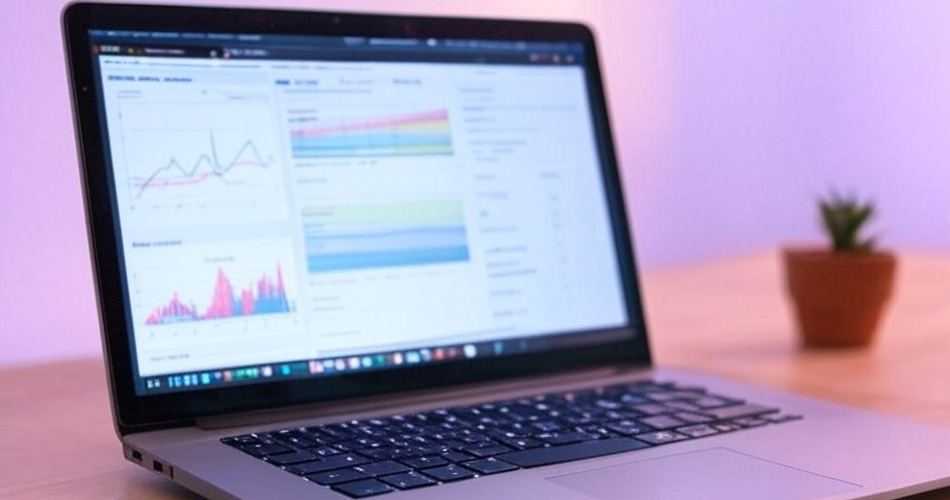Buy Traffic Online: The Difference Between PPC and CPC
Wednesday, June 7th, 2023

Is your business in need of more traffic? If you’re feeling stuck and want to learn how to buy traffic online, this article is perfect for you! In order to get people interested in your product or service, it’s important that you know how much it costs. The two main types of advertising are PPC and CPC. With PPC (Pay Per Click), the advertiser pays when a user clicks on their ad; with CPC (Cost Per Click), the advertiser pays every time someone views an advertisement without clicking on it. This article will compare these two advertising methods and show which one is best for certain situations. Once you read through this article and understand what type of marketing strategy would work best for your business, don’t hesitate to buy traffic online!
The article will go on to explain the difference between the two forms of advertising. If you are unable to get your domain name or URL approved, don’t worry! There are plenty of reputable advertising networks that can help advertise your business even without a website.
- What is PPC advertising
- The benefits of PPC advertising
- How to set up a campaign in Google Ads
- Tips for setting up your first campaign on Google Ads
- How CPC differs from PPC and how it can be beneficial to certain businesses or campaigns
- Setting up a CPC campaign in Microsoft Ads, Facebook Ads, LinkedIn Ads, etc.
- Conclusion
What is PPC advertising
PPC advertising, or Pay Per Click advertising, is a form of online advertising where the advertiser pays for each click on their advertisement. With this type of advertising, the advertiser’s goal is to get as many people as possible to click on their ad in order to generate traffic and leads.
The benefits of PPC advertising
There are many benefits to using PPC advertising, including:
- Increased visibility: When you run a PPC campaign, your ad will appear at the top of the search results pages. This means that your ad will be seen by more people, and you’ll have a higher chance of getting clicks.
- Targeted traffic: PPC ads are targeted at users who are actively searching for your product or service, which ensures you’ll get relevant traffic to increase your business’s profits.
- High conversion rates: Since PPC ads show targeted traffic, the chances of getting conversions will be much greater than with other types of marketing strategies. You can use tools such as Google Analytics to track and measure your PPC campaign to improve the ROI of it.
How to set up a campaign in Google Ads
Setting up your first PPC campaign can be tough, especially if you’re working with limited amounts of funds. But don’t worry! There are plenty of tools out there that can help get your campaigns started without having to spend a penny.
1) Open a Google Ads account, and click “New Campaign.” Select PPC as your campaign type and set your daily budget and monthly budget. Set the relevant filters to narrow down the people who are seeing your ad.
2) Click on “Search Network Only” if you only want your ads to be seen by people searching for your product or service. If you want to expand your reach, select “Display Network Only” so that your ads are only shown to people browsing websites that allow Google Ads on their website. You can even target specific locations with the campaign.
3) Once you’ve finished setting up your account, it’s time to create your ads. Choose your keywords, and enter some creative text for the ad. Finally, make sure to set up a Google Analytics goal so you can track conversions on your website.
Tips for setting up your first campaign on Google Ads
1) Use Keyword Planner to find relevant keywords that are likely to get clicks from relevant traffic. To do that, type in the seed keyword (i.e., “basket weaving”) into Keyword Planner and see which keywords you could expand upon. Once you’ve narrowed down your keywords, you’ll be able to choose ones with the right amount of search volume.
2) Set your campaign budget low if you’re just starting out. Don’t start with an expensive campaign, since you’ll need time to see what’s working and what isn’t. This can help save money in the long run if your campaign doesn’t work out.
3) Use negative keywords so that your ads won’t be shown to people who are searching for irrelevant words or phrases. This will help improve your click-through rate (CTR), which will lead to more conversions.
4) Use negative match types to remove unnecessary keywords that could be preventing your ads from showing up for relevant searches. You can also use broad match, phrase match, and exact match keywords to make sure you’re targeting the right people with your ads.
5) Use Google Ad Extensions to gain more exposure for your ads, which can help you get more clicks at a lower cost per click. You can add in extra information about your business, such as your address and phone number, to gain even more targeted traffic.
6) Test out different ad copy in order to see what gets the best reaction from your target audience. For example, if you’re selling a product that has many features and variations, you could include multiple keywords in one ad. This will help get more clicks on your ads by appealing to people with different interests and search intents.
7) Try remarketing so that your ads appear to visitors who have already visited your website. You can also use Google Analytics goals to track conversions on your website so you know which ads are the most effective.
8) Use scheduled bidding if you want to automatically adjust your bids during different times of day or days of the week. This ensures that your campaigns are always optimized for traffic at all times, no matter what type of traffic you’re getting.

9) Use campaign drafts in order to manage your campaigns from a single interface rather than having to switch back and forth between different sections of the ads manager. Drafts are especially useful if you want to experiment with multiple ad groups or copy at once, since you can easily duplicate your efforts on new drafts without having to enter your ad copy all over again.
10) Track conversion rates through the website and Google Analytics to see which ads are getting you the most conversions for your money. Try changing up the keywords you use, the bidding strategy you choose, or even your landing page in order to get more out of your advertising budget.
How CPC differs from PPC and how it can be beneficial to certain businesses or campaigns
When it comes to online advertising, there are two main types of pricing models that you should consider before you buy traffic online: cost per click (CPC) and cost per impression (CPM). CPC is the more common type of pricing, where businesses pay every time someone clicks on their ad. With CPM, businesses pay every time their ad is shown, regardless of whether or not anyone actually clicks on it.
CPC can be more beneficial for certain businesses or campaigns than CPM. For example, if you’re running a campaign that’s targeting people who are already interested in your product or service, then CPC would be the better choice. That’s because you’re only paying for people who are actually clicking on your ad, which means you’re not wasting money on people who are uninterested.
CPC could also be beneficial for certain types of landing pages, such as product pages or even sign-up forms. This is because you know that people will want to follow through with the action you want them to take (e.g., add your product to their cart, sign up for an email newsletter, etc.) so you can effectively use CPC to get the word out about your product while still generating sales.
The main drawback of CPC is that it can be more expensive than CPM, so if your business doesn’t have a high enough conversion rate for its traffic, then CPC could be too much money spent on advertising for you to get the return on investment you need.
Gain a competitive advantage through a next-gen free traffic exchange platform that keeps visitors coming back.
Setting up a CPC campaign in Microsoft Ads, Facebook Ads, LinkedIn Ads, etc.
Setting up a CPC campaign involves a lot of setup in the start, setting a bid amount, and then targeting a specific audience. You’ll want to use tools like Microsoft Ads, Facebook Ads, or LinkedIn Ads along with other social media advertising tools to make this happen. To make the most out of your CPC campaign you’ll want to monitor which ads are performing best and remove any that aren’t performing well.

Calling your prospects with a call-to-action can also be an excellent way to increase conversion rates for your affiliates. If you’re promoting a product that may require additional information before purchasing, why not direct people back to your website via a landing page? You can do this by adding a Call-to-Action (CTA) button to your ad.
Conclusion
There are two main types of pricing models: cost per click (CPC) and cost per impression (CPM). CPC is the more common type of pricing, where a business pays every time someone clicks on their ad. With CPM, businesses pay for each ad shown regardless if anyone actually clicked it or not. The major difference between them is that with CPC you only pay when somebody clicks your ads whereas with CPM you’re paying no matter what happens to an advertisement as long as it’s being seen by people online. One other thing to note about these different price points is that they can vary depending on which website you choose to advertise through such as Microsoft Ads, Facebook Ads, LinkedIn Ads etc. Even though there may be some drawbacks, CPC is often the better choice for certain businesses or campaigns due to the fact that you’re not wasting money on people who are uninterested.
If your business doesn’t have a high enough conversion rate for its traffic, then CPC could be too much money spent on advertising for you to get the return on investment you need. Call-to-action ads can be used to drive traffic back to your website and increase conversion rates for your affiliates.
Filed under: Tips & Tricks
Exclusive Offer!
1,500,000 Points for $110 $68. If you're running low on points — don't miss out
limited time